Beckett Hall (or Beckett House) is a country house at Shrivenham in the English county of Oxfordshire (formerly in Berkshire). The present house dates from 1831.
Contents

Beckett Hall (or Beckett House) is a country house at Shrivenham in the English county of Oxfordshire (formerly in Berkshire). The present house dates from 1831.

This manor is first mentioned in the Domesday survey, [1] and was acquired by King John in 1204. [2]
The King holds Scrivenham in the demesne [domain] that King Edward held it. There are 46 hides. There is land for 33 ploughs. On the demesne there are 4 ploughs and there 80 villeins and 17 borderers with 30 ploughs...In the Manor are two mills worth twenty shillings, and 240 acres (0.97 km2) of meadow and woodlandto render 20 swine. In the time of King Edward it was worth 35 pounds, and afterwards 20, not 45 pounds. [3]
The property was held by William, the Count of Evreux, on behalf of King John who occasionally made residence there. In return for service, King John granted ownership of the estate to the de Becote family who held the manor until 1424.
In 1633, the Manor was bought by Sir Henry Marten, a judge, then inherited by his son Henry Marten, a prominent Civil War politician and one of the regicides of King Charles I. In 1648, the house was ransacked by royalists. [4] On the son's death, the lands were sold to Sir George Pratt. [5]
In 1666, John Wildman bought the property. Wildman's son adopted John Shute as his heir. In 1716, John Shute was bequeathed the Barrington name by Francis Barrington and inherited the Beckett estates. He was also the recipient of a newly created Peerage of Ireland, Viscount Barrington of Ardglass. He changed his name to John Shute Barrington, and established Beckett as the family seat. The Barrington family held the estate for many years.
The present house was built in 1830–1831 for the 6th Viscount Barrington and is near the site of an earlier large manor house which was partly burnt down during the Civil War. [6] [7] The first designs were by the architect William Atkinson, but were redrawn by Thomas Lidell, brother of the Viscountess. It has two storeys and attics, and is in Elizabethan revival style with mullioned windows, gabled roofs and tall chimney-stacks. The east (entrance) front and the south front have five bays, in the latter case with the two outer bays projected forward. The entrance is flanked by full-height octagonal buttresses, capped by stone cupolas. Inside are decorative plaster ceilings and fine marble fireplace surrounds, several of them from the 18th century and perhaps from the previous house. [8] To the north are a two-storey servants' block and modern additions.
In 1936, following the death the previous year of Charlotte, widow of the 9th Viscount Barrington, the hall and estate were bought by the War Office for use as an artillery training school. [9] From 1939 it was the home of 133 Officer Cadet Training Unit, [10] and in 1945–6 the American University for US military personnel.[ citation needed ]
In 1946, the estate became home to the Royal Military College of Science, since 2015 absorbed into the Defence Academy of the United Kingdom, and the hall served as an officers' mess, then as the college library. The college later vacated the hall, moving to a new building on the DCMT campus, and the hall became a management centre. In 2021 the building became the Armed Forces Chaplaincy Centre after their previous home at Amport House, Hampshire was vacated. A modern extension has been built providing accommodation.[ citation needed ]
The house is a Grade II listed building; [8] the China House in the grounds, traditionally seen as the work of Inigo Jones, is listed at Grade I. [11]
Notable residents include:
The estate and the Barrington family who lived there were the inspirations for the naming of Becket, Massachusetts and Great Barrington, Massachusetts.[ citation needed ]

John Barrington, 1st Viscount Barrington, known as John Shute until 1710, was an English dissenting theologian and Whig politician who sat in the House of Commons from 1715 to 1723.

Shute Barrington was an English churchman, Bishop of Llandaff in Wales, as well as Bishop of Salisbury and Bishop of Durham in England.
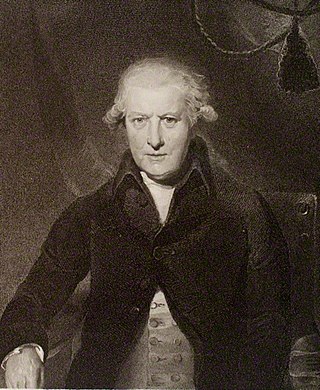
William Wildman Shute Barrington, 2nd Viscount Barrington, PC, was a British politician who sat in the House of Commons for 38 years from 1740 to 1778. He was best known for his two periods as Secretary at War during Britain's involvement in the Seven Years War and American War of Independence.

Viscount Barrington, of Ardglass in the County of Down, was a title in the Peerage of Ireland. It was created in 1720 for the lawyer, theologian and politician John Barrington. He was made Baron Barrington, of Newcastle in the County of Limerick, also in the Peerage of Ireland, at the same time.

Sir John Wildman was an English politician and soldier.

Stanford in the Vale is a village and civil parish in the Vale of White Horse about 3+1⁄2 miles (5.6 km) southeast of Faringdon and 5 miles (8 km) northwest of Wantage. It is part of the historic county of Berkshire, however since 1974, it has been administered as a part of Oxfordshire. The 2011 Census recorded the parish's population 2,093.
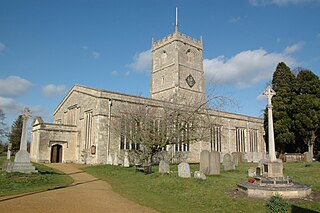
Shrivenham is a village and civil parish in the Vale of White Horse, Oxfordshire, England, about 5 miles (8 km) south-west of Faringdon. The village is close to the county boundary with Wiltshire and about 7 miles (11 km) east-northeast of Swindon. The 2011 Census recorded the parish population as 2,347. The parish is within the historic boundaries of Berkshire; the 1974 boundary changes transferred the Vale of White Horse to Oxfordshire for administrative purposes.

Buckland is a village and large civil parish about 4 miles (6.4 km) northeast of Faringdon in the Vale of White Horse District. Buckland was part of Berkshire until the 1974 boundary changes transferred it to Oxfordshire. The 2011 Census recorded the parish's population as 588. Outside the village the civil parish includes the small settlements of Carswell and Barcote to the west, Buckland Marsh to the north, and the modern development of Gainfield on the southern boundary.

Longcot is a village and civil parish in the Vale of White Horse District. It was part of Berkshire until the 1974 boundary changes transferred it to Oxfordshire. The village is about 3 miles (5 km) south of Faringdon and about 2.5 miles (4 km) northeast of Shrivenham. The A420 road between Swindon and Oxford passes through the parish 1 mile (1.6 km) northwest of the village. The 2011 Census recorded the parish's population as 617.

Great Coxwell Barn is a Medieval tithe barn at Great Coxwell, Oxfordshire, England. It is on the northern edge of the village of Great Coxwell, which is about 9 miles (14 km) northeast of Swindon in neighbouring Wiltshire.

Southmoor is a village in the civil parish of Kingston Bagpuize with Southmoor, about 6 miles (9.7 km) west of Abingdon, Oxfordshire. Historically part of Berkshire, the 1974 boundary changes transferred local government to Oxfordshire. Southmoor village is just south of the A420 between Oxford and Swindon.

Denchworth is a village and civil parish about 2.5 miles (4 km) north of Wantage. It was part of Berkshire until the 1974 boundary changes transferred the Vale of White Horse to Oxfordshire. The 2011 Census recorded the parish's population as 171. The parish is bounded by the Land Brook in the west and the Childrey Brook in the east. The Great Western Main Line between Reading and Swindon runs through the parish just south of the village, but there is no station.
Patrick William Daines Barrington, 11th Viscount Barrington of Ardglass, was an Irish peer and a writer of humorous verse.
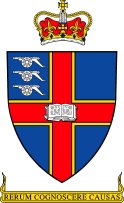
The Royal Military College of Science (RMCS) was a British postgraduate school, research institution and training provider with origins dating back to 1772. It became part of the Defence Academy of the United Kingdom in 2009, and ceased to exist as an independent unit in 2015.

Walter Bulkeley Barrington, 9th Viscount Barrington JP, DL, was a peer of the United Kingdom.
William Keppel Barrington, 6th Viscount Barrington, styled The Honourable from 1814 until 1829, was a British businessman and politician.

Hinton Waldrist is a village and civil parish in the Vale of White Horse, England. It was part of Berkshire until the 1974 boundary changes transferred it to Oxfordshire. The village is between Oxford and Faringdon, 9 miles (14 km) southwest of Oxford. The parish includes the hamlet of Duxford. The 2011 Census recorded the parish's population as 328.
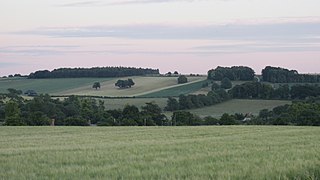
West Ginge is a hamlet within the civil parish of Ardington in the English county of Oxfordshire, 3.9 miles (6.3 km) by road to the southeast of Wantage. West Ginge is immediately next to the hamlet of East Ginge, which is contained within the parish of West Hendred. West Ginge is more populous than East Ginge, which is dominated by farm buildings, and the two hamlets are often simply referred to as Ginge.

Henry Frederick Francis Adair Barrington, was a South African lawyer, farmer and member of Parliament.
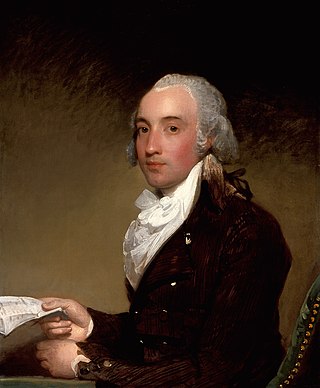
Richard James Barrington, 4th Viscount Barrington, was a British aristocrat.